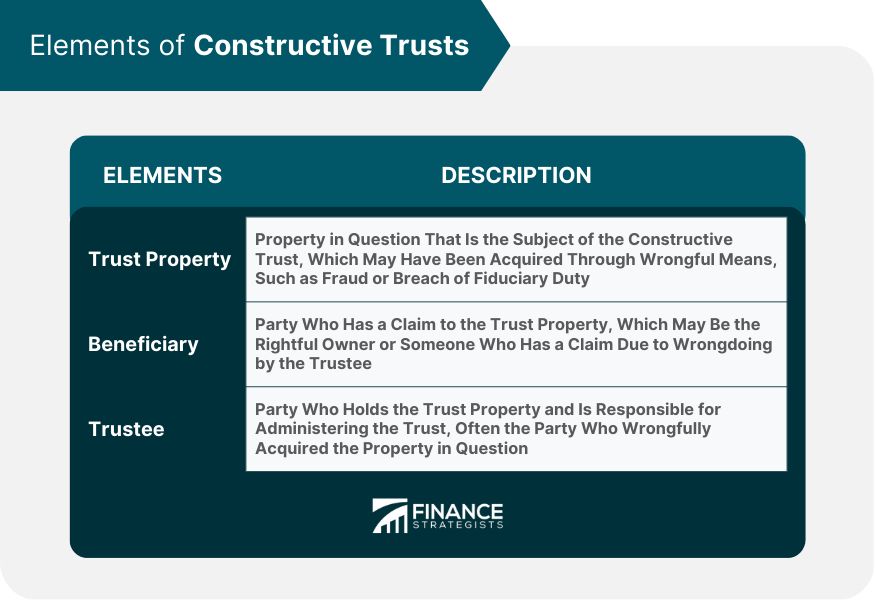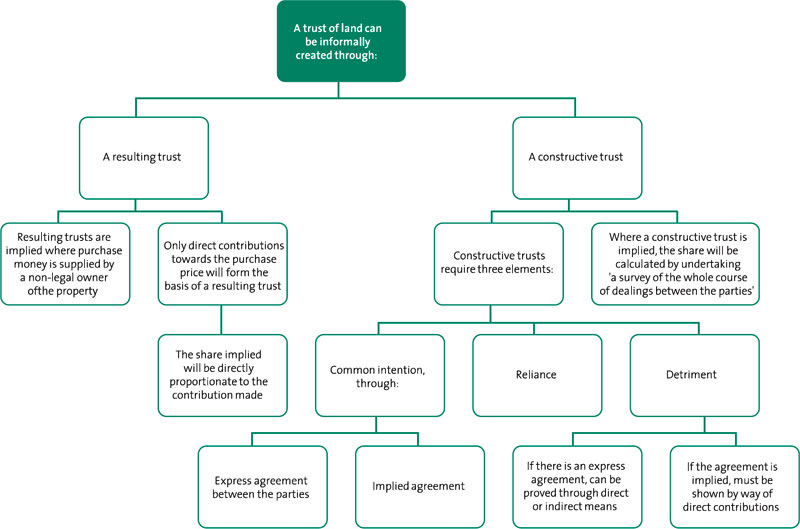Explaining the Basics of What Is A Constructive Trust and Its Purpose
Explaining the Basics of What Is A Constructive Trust and Its Purpose
Blog Article
Introducing the Advantages of a Positive Count On Dealing With Recipient Disputes
The idea of a useful depend on emerges as a pivotal tool in the complex world of beneficiary disputes, supplying a nuanced service to disputes that commonly develop from wrongful residential property retention. By fostering a fiduciary relationship in between celebrations, this equitable solution not only facilitates swift resolutions yet likewise offers to hinder prospective misbehavior. As we explore the complex advantages of positive trust funds, one might start to question how these mechanisms can reshape the landscape of estate disputes and add to an extra fair distribution of possessions among beneficiaries.
Interpretation of Constructive Trust Fund
A positive count on is often developed by courts to address scenarios where one celebration has wrongfully obtained or preserved residential or commercial property that truly comes from one more (What Is A Constructive Trust). This lawful concept is not a standard depend on, as it does not call for the rules commonly associated with count on production, such as a created contract or the purpose of the parties involved. Rather, a constructive trust occurs by procedure of law, acting as an equitable remedy to stop unjust enrichment
The courts enforce a positive depend on when it is established that a person celebration holds building under scenarios that, in equity and excellent conscience, must not allow them to keep it. Usual situations include deceptive activities, breaches of fiduciary obligation, or situations where an event has obtained residential property via inappropriate means. The constructive trust thus functions to shield the civil liberties of the rightful proprietor by making certain that the building is held for their advantage.
Once developed, the useful count on requires the event in ownership of the home to convey it to the rightful proprietor, therefore rectifying the wrongful circumstance. This system emphasizes the legal system's commitment to fairness and justice in residential property conflicts, emphasizing the value of honest conduct in ownership and transfer of properties.
Advantages of Constructive Trusts
Useful trusts use numerous significant advantages in lawful disagreements involving home legal rights. Mostly, they act as an equitable solution, permitting courts to attend to circumstances where an event has actually wrongfully gotten or maintained building that truly comes from another. This develops a structure for fairness, making certain that the rightful owner is compensated and the unjust enrichment of the perpetrator is stopped.
Moreover, positive trust funds can expedite resolution in conflicts over estate possessions, consequently minimizing the prolonged and frequently controversial lawsuits procedures related to standard residential or commercial property conflicts. Their adaptability enables courts to customize treatments to fit the details circumstances of each situation, which can lead to more acceptable end results for all celebrations entailed.
Furthermore, positive trusts advertise transparency and accountability amongst fiduciaries and recipients, as they require the last to act in the very best passions of the former. This strengthens the integrity of fiduciary connections, fostering depend on and participation. Finally, by dissuading misconduct pertaining to property possession, constructive trusts contribute to the overall security of monetary and legal systems, making certain that building legal rights are respected and maintained within society.
Just How Constructive Trust Funds Work

In technique, when a constructive depend on is enforced, the court identifies the building concerned and establishes a fiduciary connection between the celebrations involved. The event who holds the home ends up being a trustee, obliged to manage it for the advantage of the rightful owner, referred to as the beneficiary. This connection is not based on a formal arrangement yet rather on the principle of equity, aiming to correct situations where one party's gain directly correlates with an additional's loss.

Study and Examples
When examining the useful application of constructive trust funds, various instance studies show how courts browse intricate situations including unjustified enrichment. One notable instance is * Pettkus v. Becker *, where the Supreme Court of copyright established a useful trust to correct the unfair enrichment of one event over an additional in a lasting relationship. The court determined that the payments of one companion to the procurement of property justified the charge of a positive trust fund, making certain equitable distribution.
One more considerable instance is * Gisborne v. Gisborne *, where the court imposed a constructive depend address the cases of brother or sisters over their departed brother's estate. The court acknowledged the contributions made by the siblings in keeping the family members residential property, leading to a decision that required the estate to represent those contributions, consequently protecting against unjustified enrichment.
These cases exemplify exactly how useful depends on can properly deal with conflicts by concentrating on justness and the avoidance of unjustified enrichment. By checking out the details payments and scenarios of the celebrations involved, courts can apply constructive counts on to achieve simply end results, ultimately enhancing the fair principles underpinning these address lawful systems.

Steps to Develop a Useful Depend On
To establish a useful trust, several vital steps have to be complied with to make sure that the insurance claim is validated and legitimately identified. Initially, the claimant must show the existence of a fiduciary connection or a circumstance that warrants the imposition of a constructive trust fund, such as fraudulence, unjust enrichment, or a breach of responsibility.
Second, it is important to collect and existing engaging proof that supports the insurance claim. This includes paperwork and testimonies that illustrate the circumstances leading to the supposed wrongful retention of residential or commercial property or advantages by the trustee.
Third, the claimant needs to file an application in the appropriate court, verbalizing the premises for asking for the charge of a positive trust fund. This petition must outline the specifics of the relationship and the unjust enrichment that demands the trust.
Verdict
To conclude, constructive counts on represent a critical fair treatment in the world of recipient problems, effectively dealing with wrongful property find out retention and preventing unjustified enrichment. By developing a fiduciary connection, these trusts boost openness and liability amongst residential property holders. The expedited resolution of estate disputes and the frustration of transgression contribute to better security within economic and legal systems. Inevitably, useful trusts advertise justness amongst beneficiaries, making certain that rightful ownership is preserved and safeguarded.
A constructive count on is frequently developed by courts to address circumstances where one celebration has wrongfully obtained or preserved residential property that truly belongs to one more.The courts impose a constructive depend on when it is determined that one party holds building under circumstances that, in equity and excellent conscience, must not permit them to keep it. By dissuading misbehavior related to residential or go to the website commercial property possession, useful counts on add to the overall security of economic and legal systems, ensuring that building legal rights are valued and supported within culture.
In method, when a constructive count on is enforced, the court determines the residential property in concern and develops a fiduciary partnership in between the parties entailed. What Is A Constructive Trust. The court identified that the payments of one partner to the procurement of home warranted the imposition of a positive count on, making sure equitable distribution
Report this page